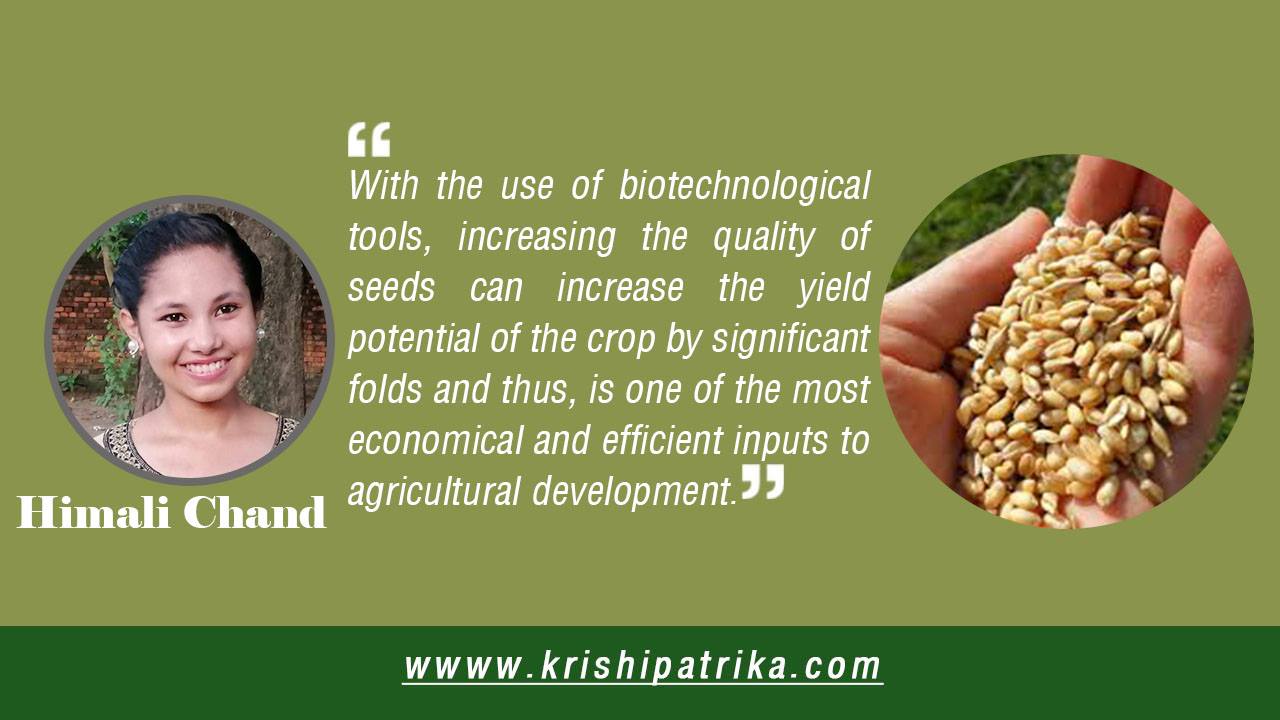
Agriculture is the mainstay of the economy, providing livelihoods for over 80 per cent of the population and generating around one-third of GDP but still Nepal struggles to generate enough food for people of their country.
In Nepal, farming has always been a subsistent practice among farmers’ as they have very limited access to new technologies, and market opportunities. In addition to all those depressed situations of agriculture COVID-19 pandemic has added more downfall to the production capacity of Nepal due to obstructed transportation leading to breakage of supply chain and equals to null seed or other reproducing units supply of various crops.
Beside this year, the import of agro-products is sky-rocketing. In the fiscal year 2019/20 country’s overall imports dropped by 15.63 percent to Rs1.19 trillion, ending mid-July, but still agricultural goods imports continued to increase. The share of agro products in the total import bill rose up to 21 percent. The agricultural goods imports bill in 2009-10 amounted to Rs. 44.43 billion. In 10 years, it has grown by almost six times. It’s because of the inability of Nepal to be self-sufficient in both food and seed resulting in invitation of various chronic deficiencies and famine situation. Without the proper understanding and consciousness on the importance of being self-sufficient, it is sure to increase more in an alarming rates in coming days.
Seed is one of the most crucial elements in the livelihoods of agricultural communities. It is the repository of the genetic potential of crop species and their varieties resulting from the continuous improvement and selection over time. Seed is crucial to food security, hence household nutrition. The availability of seed supported by other input and service are importance for increased crop yield and agricultural production. Diverse genetic resources allow humans to select and breed plants with desired characteristics, thus increasing agricultural productivity at the time of need; crisis.
To address these challenges, the use of high quality seeds is one of the most important elements in increasing agricultural production in any farming system. Quality seed is defined as varietally pure with a high germination percentage, free from disease and disease organisms, and with a proper moisture content and weight. Selecting high yielding varieties adapted to the area of production, with disease, insect, lodging, and shattering resistance, along with other desirable characteristics are basic keys for satisfactory crop performance and yield.
Seed quality is complex and determined by many factors, but four key attributes may be explicitly identified:
- Genetic quality – the inherent genetic potential of the variety for higher yield, better grain quality and greater tolerance to biotic or abiotic stresses.
- Physiological quality– the potential germination and vigor leading to subsequent seedling emergence and crop establishment in the field.
- Physical quality– free from contamination with other crop seeds, common, noxious or parasitic weed seeds, mechanical damage, discoloration, and with uniform seed size and seed weight.
- Health quality – absence of infection/infestation with seed-borne pests (fungi, bacteria, viruses, nematodes, insects, etc.
The production of high quality seed is the cornerstone of any successful agriculture program but it also does not happen by chance. Each step in the production system from planting the proper variety in appropriate time to following weed control practice, fertility program, and harvest in the right time, cleaning the seeds, storage, and shipping is critical for achieving high quality seeds.
Sustained increase in agricultural production and productivity necessarily requires continuous development of new and improved varieties as well as hybrids of crops and efficient production system and supply of seeds to farmers. With the use of biotechnological tools, increasing the quality of seeds can increase the yield potential of the crop by significant folds and thus, is one of the most economical and efficient inputs to agricultural development.
High quality seeds are the result of good production practices, which include;
- Proper maintenance of genetic purity.
- Good growing conditions.
- Proper timing and methods of harvesting.
- Appropriate processing during threshing, cleaning, drying
- Appropriate seed storage and seed distribution systems.
After going through strict seed quality control evaluations and selection process by trained personals, seeds are labelled as certified quality seed and are taken to the farmers’. Since the quality seeds are the selected ones even among the numbers of breeds so their genetic potentials are so found to be high and can exploit the full potential of inputs increasing input-efficiency and gives high return per unit area. Quality seeds are also seen to survive in the extreme climatic conditions as they have better adaptation characteristics in different weather patterns. As they are of vigorous nature too, uniform seedlings and crop stand can be obtained supporting in the high economic return as well. Due to less presence of weed/ other crops seeds, land will be less invaded by foreign crops too making the intercultural management operations easier and even the well preparation of finished products can help in better marketability of the crops from quality seeds after post- harvest management.
With the use of right intervention tools with the quality seeds, the tables can be turned around by establishing Nepal as a dominant agro exporter country just like before. Since, quality seeds are an effective tools in enhancing crop productivity, its use also should be coupled with the well-designed promotion system among the farmers through local Palikas or agro vets, or other seed distribution units- which will scale up the agricultural productivity as a better response to not only COVID-19 but also to any future uncertain events.









